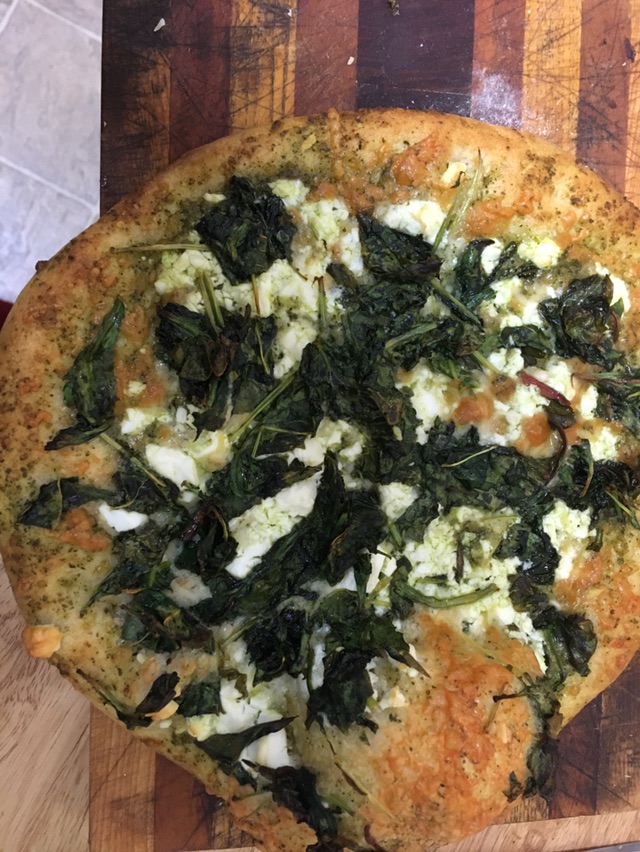
Passover is coming up, which means…. eight days (at least) without pizza! That’s a long time in this household.
For as long as I can remember, I’ve made my own pizza. When my son Zak was young, he preferred frozen pizza. Good grief. Now, however, he not only appreciates homemade pizza but he makes the best pizza ever! And I’ve learned a lot about pizza from him…..
You can see photos of Zak making pizza in his little kitchen and small oven here.
He’s got a nice pizza peel to take the pizza in and out of the oven, and a baking stone (which you can get in a kitchen shop or a ceramics supply, as he did). These are nice to have, but even if you don’t have them, you can make great pizza.
Zak also can toss the pizza dough around in the air, something I’ve never learned to do (he says it’s because I don’t practice….true). Though tossing pizza dough is great entertainment, it’s also not necessary for great pizza.
Start with the dough. I usually put 1 to 1 1/2 teaspoons of yeast and a pinch of sugar in a glass with 1/4 cup or so warm water, and let it sit for 15 minutes or so till it’s frothy. Then I add it to a bowl with a cup to a cup and a half of water, a teaspoon of salt and enough bread flour so it forms a dough. Knead it on a floured board, adding flour until it is not sticky. Put the ball of dough in a bowl that has a little olive oil, and turn the ball so it’s lightly oiled on both sides.
You can make this dough with a tablespoon or two of olive oil as well if you like your pizza dough crunchier. I used to make it that way, but Zak convinced me that it really didn’t need the oil.
You can let the dough rise for a couple hours — or, as I do, just cover the bowl and put it in the fridge.
When you want pizza, take out the dough and let it warm to room temperature. Zak advises to leave the dough a little on the tacky side, but if need be, you can put some flour on your board before you roll it out to the size you want and put it on your pizza pan. I use either a baking stone or a round pan that has holes in it to let the heat of the oven come up from the bottom. I like to sprinkle the pan with polenta-size cornmeal to give the crust more crunch.
Let it rise on the pan for another 20 to 30 minutes, and dimple the dough lightly with your fingers, before adding the topping.
Ah…the topping. You can use your imagination, but I think it’s best kept to a few ingredients. Zak starts with a garlic-olive oil spread; I often use red pepper spread, or tomato sauce or pesto. Then cheese, which could be mozzarella, pecorino or parmesano, goat cheese, feta…..or some combination or variation. (I like to keep the cheese layer light, and I’ve made a good marinara without any cheese…) Then maybe one or two of the following: kalamata olives, prosciutto, roasted eggplant, artichoke hearts, little chunks of potato, etc., etc.
Or, my favorite: caramelized onions. Lots of them.
Have your oven heated to 450 (or, as Zak says, 550) and put your pizza in. It’ll take 15 to 25 minutes, depending on the size. (but again, Zak says his pizza never takes more than 10 minutes. And I’ve watched pizza makers in Naples, where they use wood burning ovens with very high temperatures — the pizza is baked in only a few minutes).
In any case, you’ll see and smell when it’s done.

This pizza had pesto (thank you, Laurie), prosciutto and caramelized onions



















